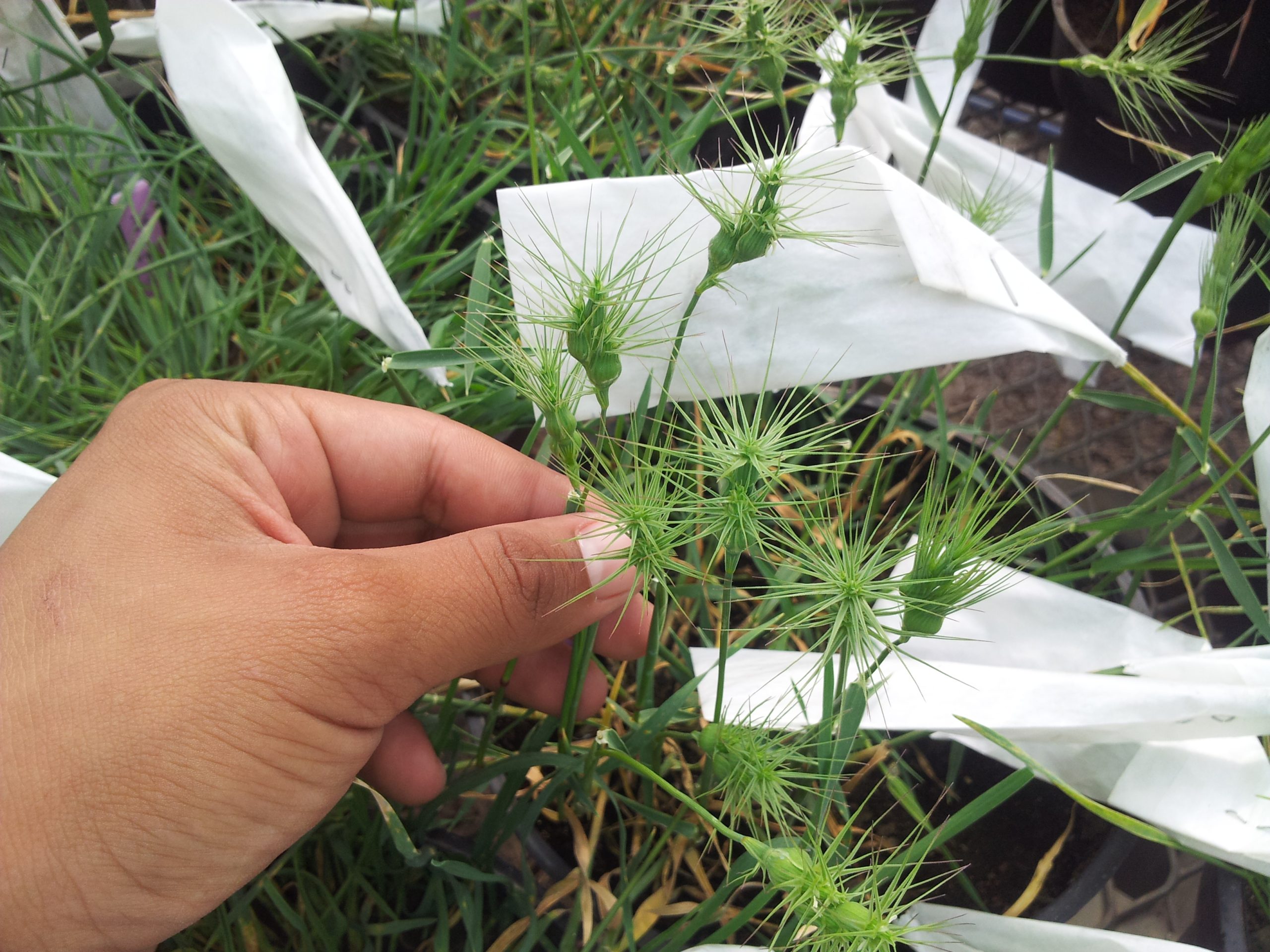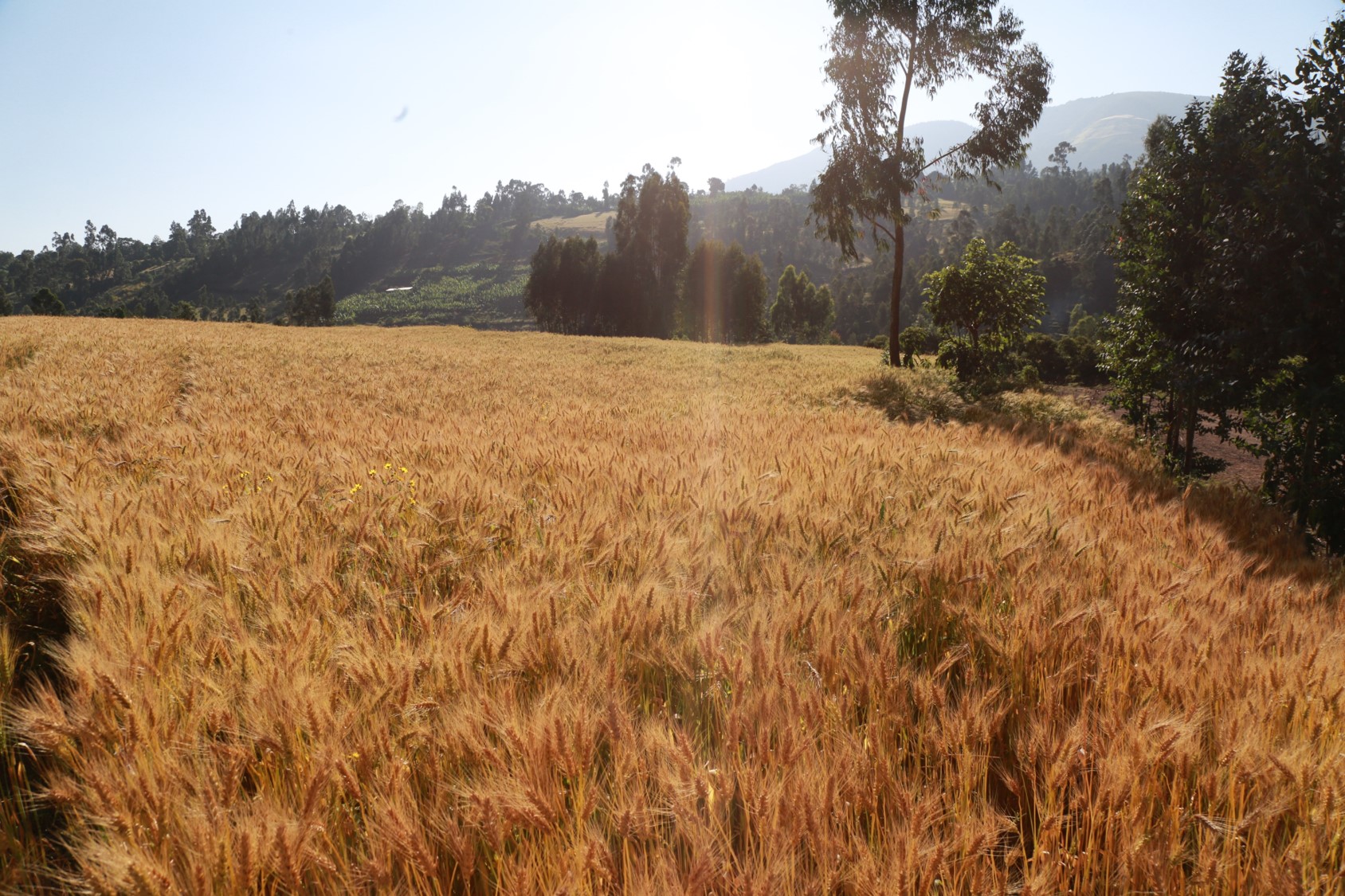CIMMYT, Mexico, August 27, 2024 — Crop wild relatives that have survived changing climates for millions of years may provide the solution to adapting wheat, humanity’s most widely grown crop, to climate change. Two new studies led by the International Maize and Wheat Improvement Center (CIMMYT) reveal how tapping into this ancient genetic diversity can revolutionize wheat breeding and safeguard global food security.
As the weather becomes more erratic and extreme, wheat — providing 20% of all calories and protein globally and serving as the primary staple food for 1.5 billion people in the Global South — faces unprecedented threats. These include heat waves, delayed rains, flooding, and new pests and diseases.
“We’re at a critical juncture,” says Dr. Matthew Reynolds, co-author of both studies. “Our current breeding strategies have served us well, but they must now address more complex challenges posed by climate change.”
The research points to a vast, largely untapped reservoir of nearly 800,000 wheat seed samples stored in 155 genebanks worldwide. These include wild relatives and ancient, farmer-developed varieties that have withstood diverse environmental stresses over millennia. Although only a fraction of this genetic diversity has been utilized in modern crop breeding, it has already delivered significant benefits.
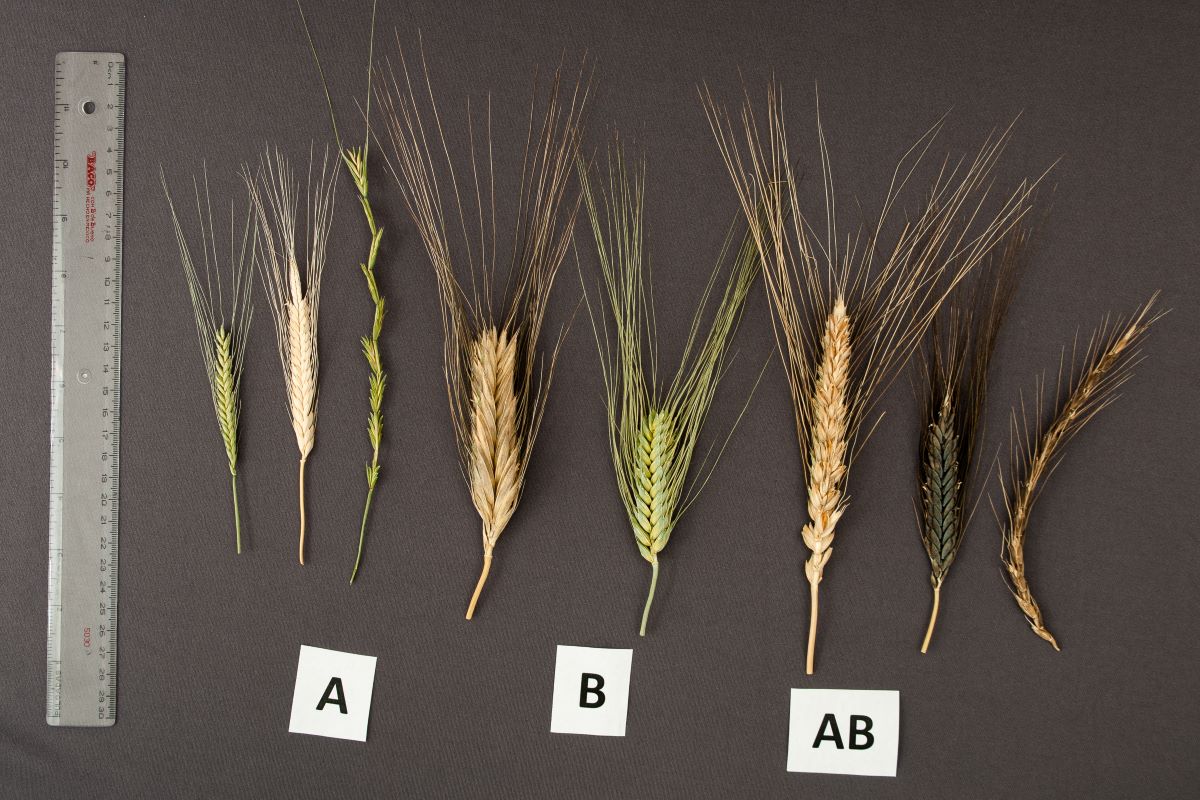
Proven impacts of wild wheat genes
One of the studies, a review published today in Global Change Biology (GCB)*, documents the immense impact of wild relatives’ traits, including on environmental sustainability. It finds that the cultivation of disease-resistant wheat varieties has avoided the use of an estimated 1 billion liters of fungicide just since 2000.
“Without transferring disease-resistant genes from wild relatives to wheat, fungicide use would have easily doubled, harming both human and environmental health,” says Dr. Susanne Dreisigacker, Molecular Breeder at CIMMYT and co-author of the review.
Sharing of new wheat breeding lines through the CIMMYT-led International Wheat Improvement Network, comprising hundreds of partners and testing sites around the world, increases productivity worth USD 11 billion of extra grain every year. The extra productivity has saved millions of hectares of forests and other natural ecosystems from cultivation.
The review highlights other key breakthroughs using wheat wild relatives, including:
- Some experimental wheat lines incorporating wild traits show up to 20% more growth under heat and drought conditions compared to current varieties.
- Genes from a wheat wild relative have generated the first crop ever bred to interact with soil microbes, reducing the production of nitrous oxide, a potent greenhouse gas, and enabling the plants to use nitrogen more efficiently.
- New, high-yielding cultivars in Afghanistan, Egypt and Pakistan were developed using wild genes and have been released as they are more robust to the warming climate.
“Breeding the first beneficial interaction with the soil microbiome — in this case biological nitrification inhibition, or BNI-wheat — is a landmark achievement by CIMMYT and JIRCAS, opening up a whole new spectrum of opportunities to boost cropping systems’ resilience and reduce environmental footprints,” says Victor Kommerell, co-author of the GCB review, and Director of CropSustaiN, a new research initiative to determine the global climate mitigation and food security potential of BNI wheat.
The second study in Nature Climate Change* showcases the urgent need to scale-up exploration and use of genetic diversity for improved climate resilience. Among the traits needed are deeper, more extensive root systems for better water and nutrient access; photosynthesis that performs well across a wider temperature range; better heat tolerance in reproductive processes; and improved survival during delayed rains or temporary flooding.
“Tapping into the complex climate-resilient traits so urgently needed today requires both access to greater genetic diversity and a paradigm shift in breeding approaches,” explains co-author of the GCB review, Dr. Julie King of Nottingham University.
Modern crop breeding has focused on a relatively narrow pool of ‘star athletes’: elite crop varieties that are already high performers and that have known, predictable genetics. In contrast, the genetic diversity of wild wheat relatives offers complex climate-resilient traits — but their use has been more time-consuming, costly and riskier than traditional breeding approaches with elite varieties. Now, new technologies have changed that equation.
Making the impossible possible
“We have the tools to quickly explore genetic diversity that was previously inaccessible to breeders,” explains Dr. Benjamin Kilian, co-author of the review and coordinator of the Crop Trust’s Biodiversity for Opportunities, Livelihoods and Development (BOLD) project that supports conservation and use of crop diversity globally.
Among these tools are next-generation gene sequencing, big-data analytics, and remote sensing technologies, including satellite imagery. The latter allows researchers to routinely monitor traits like plant growth rate or disease resistance at unlimited numbers of sites globally.
However, realizing the full potential of these genetic resources will require global cooperation. “The most significant impacts will come through widespread sharing of genetic resources and technologies,” says Dr. Kilian.
New technologies allow crop researchers to precisely identify and transfer beneficial traits from wild relatives, making what has been seen as a risky, time-consuming process into a targeted, efficient strategy for climate-proofing crops. “Satellite technology turns the planet into a laboratory,” says Dr. Reynolds, “Combined with artificial intelligence to super-charge crop-breeding simulations, we can identify whole new solutions for climate resilience.”
This research, which also applies to any crop with surviving wild relatives, promises to enhance global food security and make cropping systems more environmentally sustainable. Developing more resilient and efficient wheat varieties will help feed a global population while reducing agriculture’s environmental footprint.
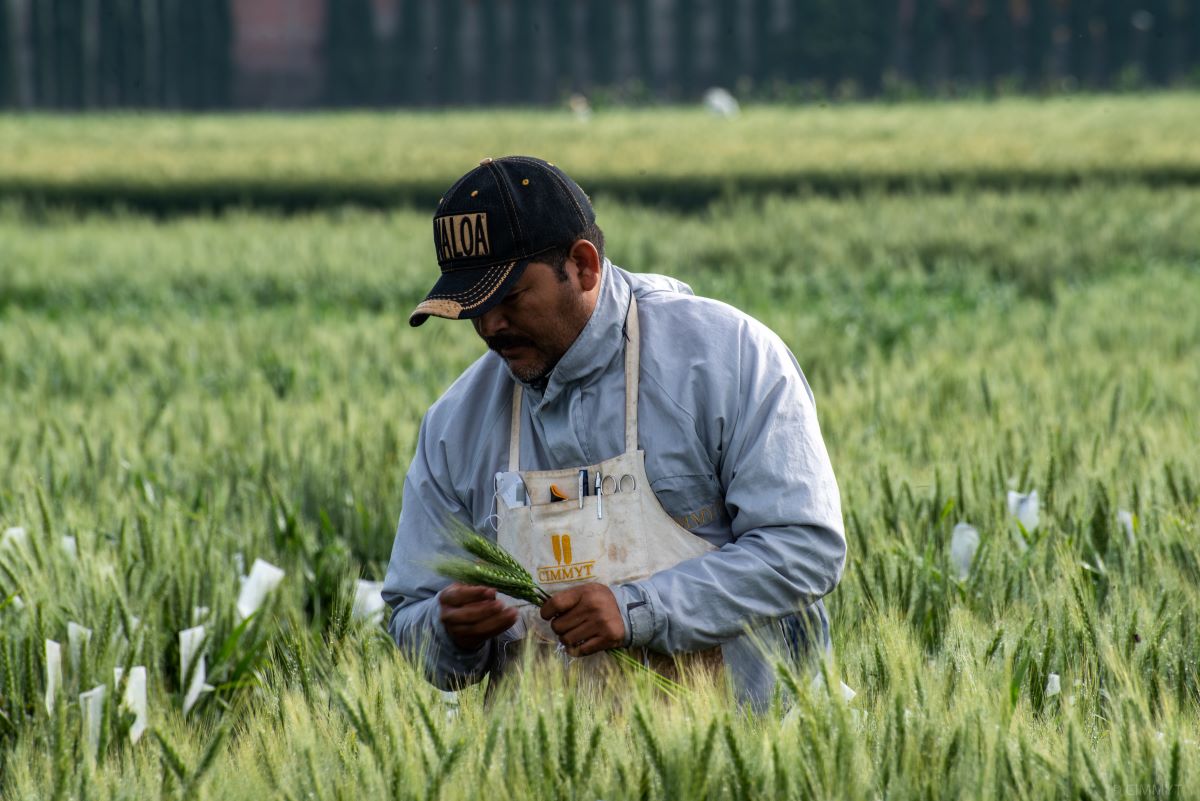
Study information and links
*Wheat genetic resources have avoided disease pandemics, improved food security, and reduced environmental footprints: A review of historical impacts and future opportunities. King J, Dreisigacker S, Reynolds M et al., 2024. Global Change Biology (Study available under embargo upon request)
*New wheat breeding paradigms for a warming climate. Xiong, W., Reynolds, M.P., Montes, C. et al. Nat. Clim. Chang. (2024). https://doi.org/10.1038/s41558-024-02069-0
Note to editors
About CIMMYT
Headquartered in Mexico, the International Maize and Wheat Improvement Center (known by its Spanish acronym, CIMMYT) is a not-for-profit agriculture research and training organization. The center works to reduce poverty and hunger by sustainably increasing the productivity of maize and wheat cropping systems in the developing world. Learn more at www.cimmyt.org
About the Crop Trust
The Crop Trust is an international organization working to conserve crop diversity and protect global food and nutrition security. At the core of the Crop Trust is an endowment fund dedicated to providing guaranteed long-term financial support to key genebanks worldwide. The Crop Trust supports the Svalbard Global Seed Vault and coordinates large-scale projects worldwide to secure crop diversity and make it available for use, globally forever and for the benefit of everyone. The Crop Trust is recognized as an essential element of the funding strategy of the International Treaty on Plant Genetic Resources for Food and Agriculture. Learn more at www.croptrust.org
About the Biodiversity for Opportunities, Livelihoods and Development (BOLD) Project
BOLD is a 10-year project to strengthen food and nutrition security worldwide by supporting the conservation and use of crop diversity. The project works with national genebanks, pre-breeding and seed system partners globally. Funded by the Government of Norway, BOLD is led by the Crop Trust in partnership with the Norwegian University of Life Sciences and the International Plant Treaty.
Learn more at https://bold.croptrust.org/
For more information, contact:
Lynda Mwakisha (Nairobi, Kenya): lmwakisha@burness.com; +254 704 589 177
Jelle Boone, CIMMYT: J.BOONE@cgiar.org
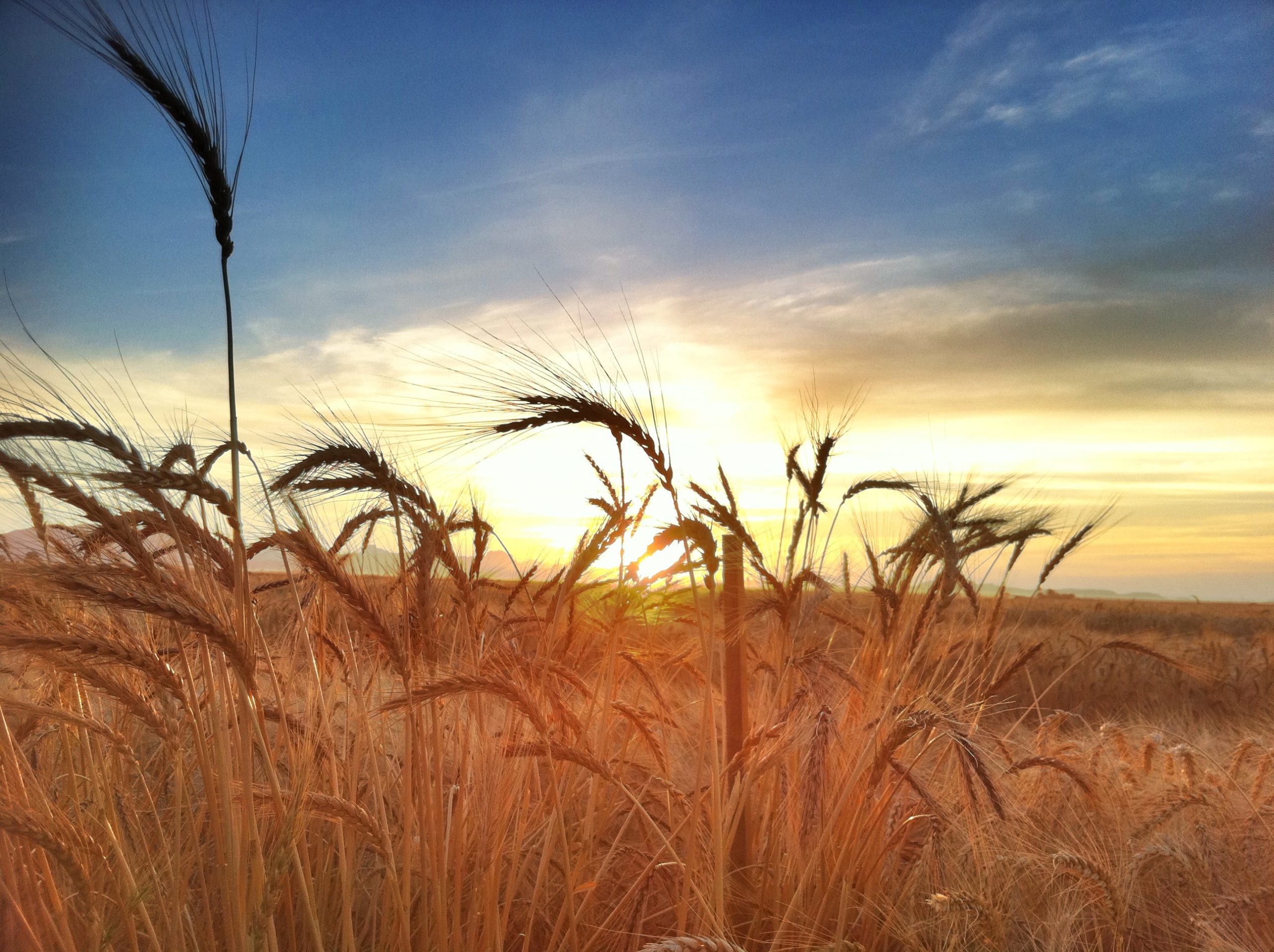
 Climate adaptation and mitigation
Climate adaptation and mitigation 